America's Cup Pavilion
San Francisco, California USA
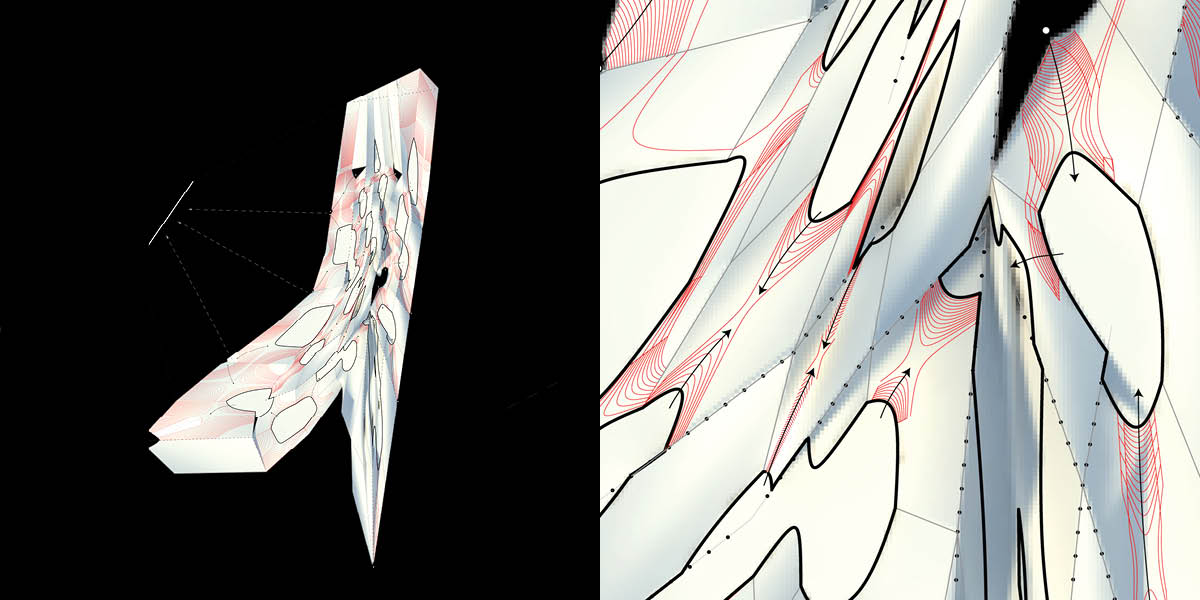
Using the minimal material means of thin shell concrete hypar modules to create an excessive spatial effect.
The design challenge for this landscape/pavilion, to serve the immediate needs of the 2013 America's Cup and as a future public park/event space, was to establish a rigorous geometric structural system that is variable enough to synthesize the particularities of the program, circulation, and context--in reference to the water, terrain, and icons of the city. The project's underlying conceptual premise lies in the potential of two potential paradoxes: spatial surfaces of the hypar module and the formal structures of its spatial effects. These two paradoxes are synthesized by varying the hypars' surface curvature: high degree curvature allows light and air below and lower degree curvature creates public access and use to the roofscape above. Another formal structure, projecting level waterlines onto the curved surfaces, creates a terraced roof topography to traverse, as well as seating and open spaces.
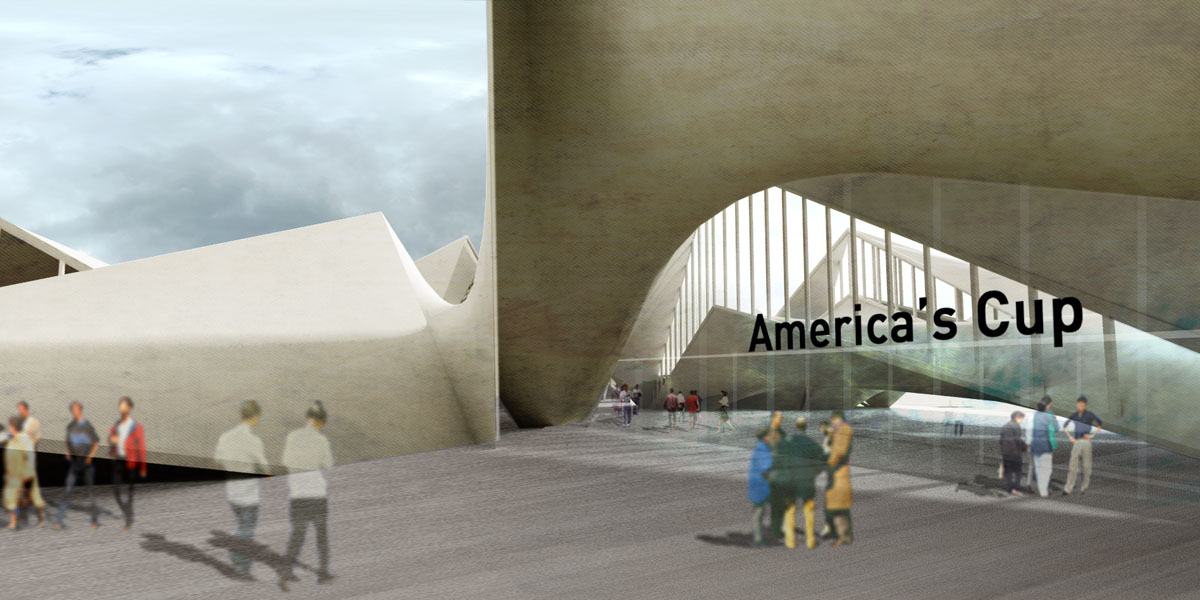
Main entry. Balancing excessive spatial forms of hyperbolic parabolas achieved through the minimal material means of concrete shells
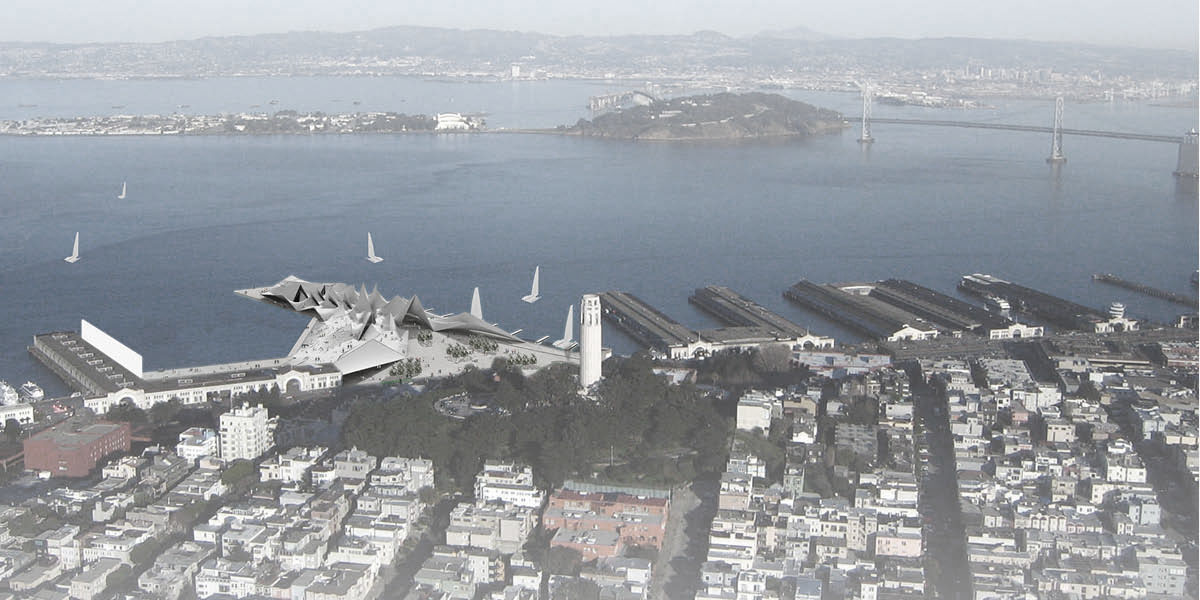
Urban strategy: Merging the inward and outward orientation of existing piers
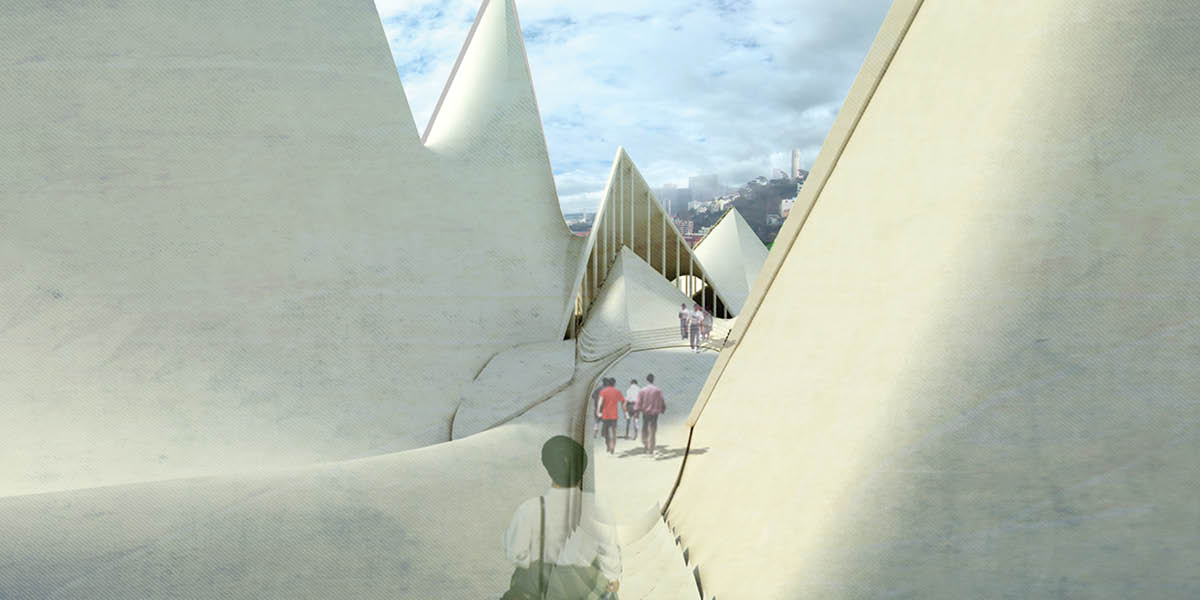
Steep and narrow spaces of rooftop evoke the city's hills
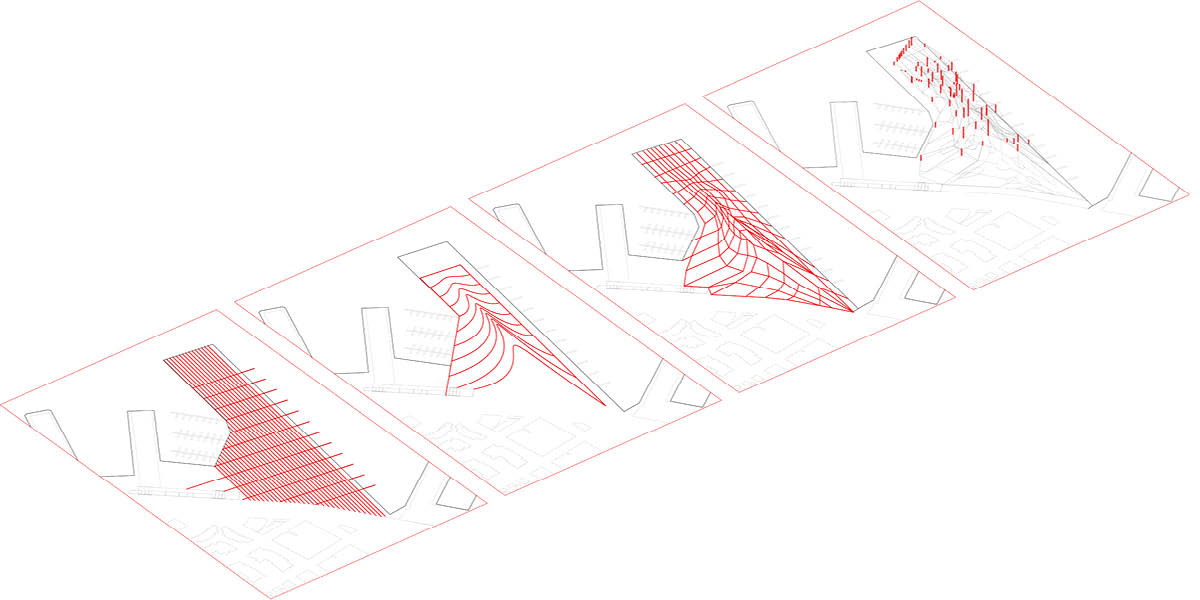 Derivation of distorted grid that order the field of hypars
Derivation of distorted grid that order the field of hypars1. Dock spacing
2. Longitudinal pull to draw people to pier end
3. Lateral distortion based on scales of different uses
4. Vertical extrusion to accommodate roof circulation and introduce light below
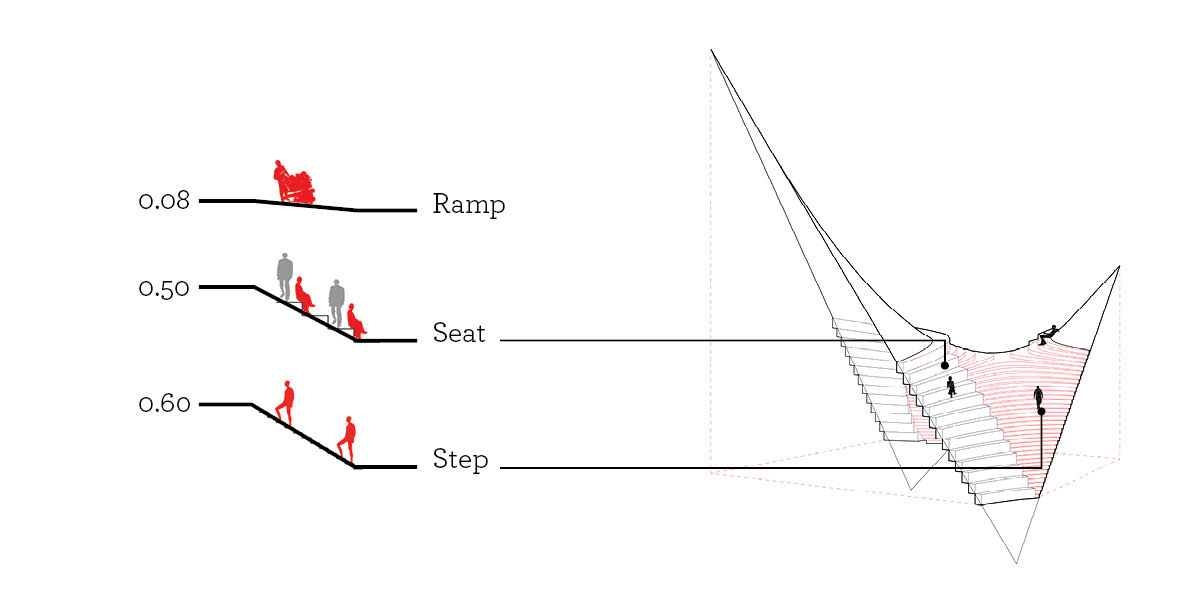
Extruding the inscribed waterlines on a hypar module based on surface curvature to form ramps, seating, and steps
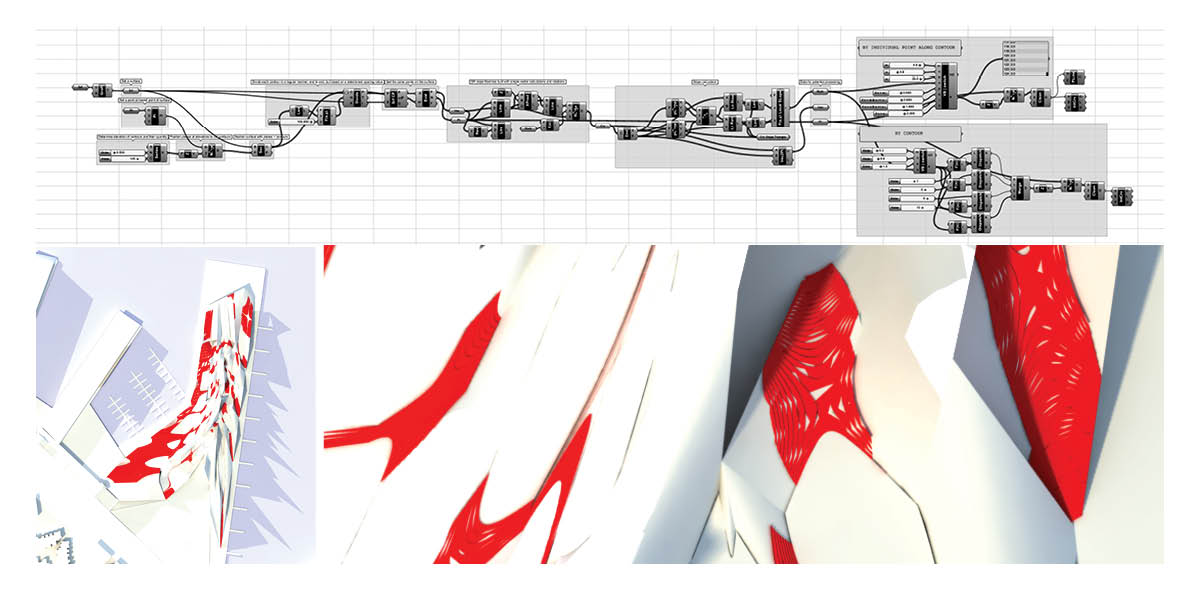
Parametric model calculates surface curvature and extrudes inscribed waterlevels according to appropriate use (ramp, seating, steps)
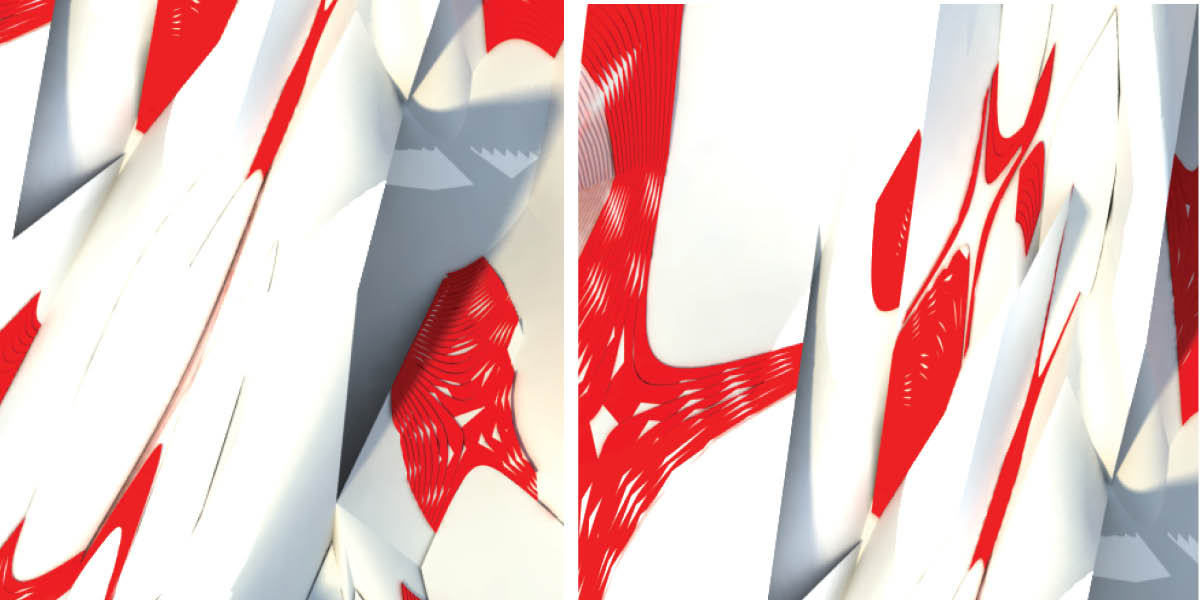
Detail of extruded ramps, seating, and steps (in red)
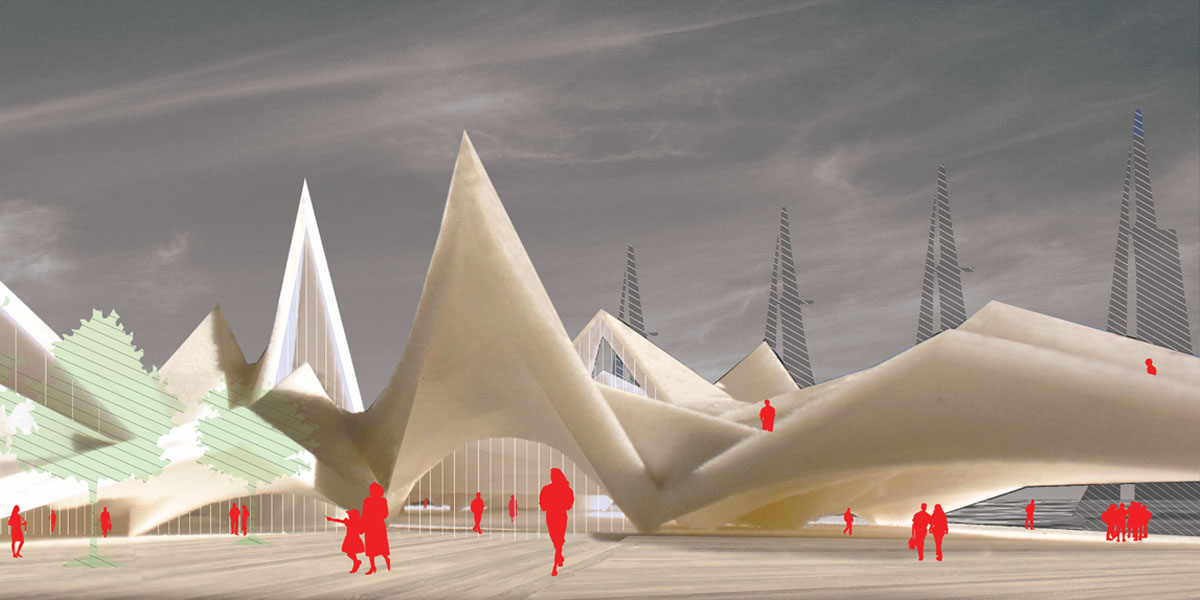
Higher peaks in the interior allow natural light below and evoke the sails of the docked catamarans. 3D Print model
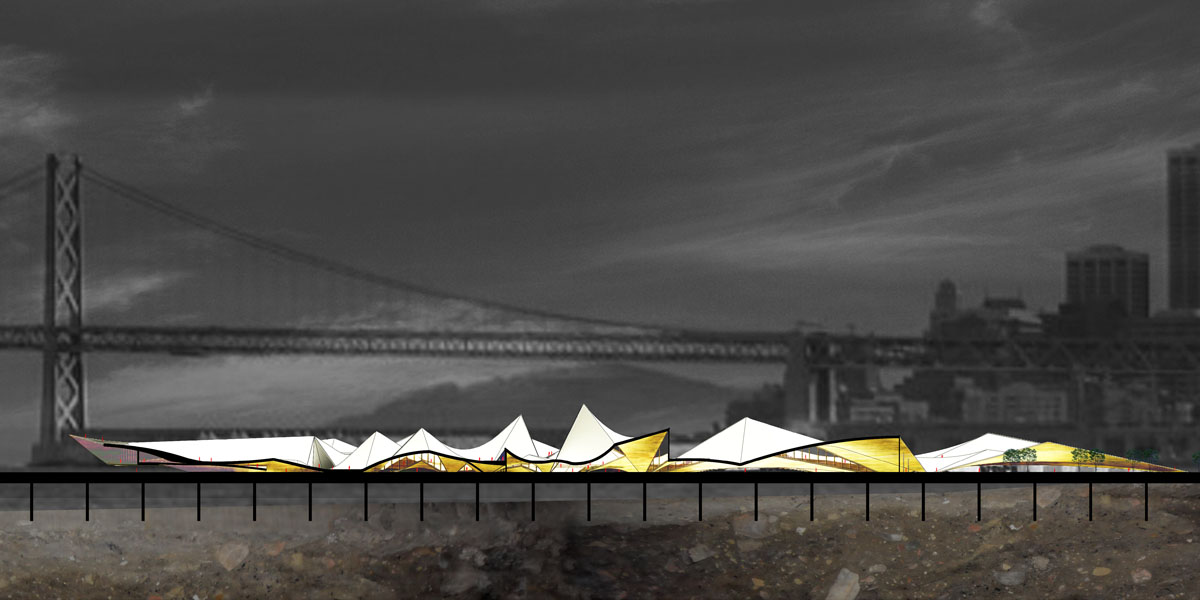
Long section evokes the geometry of the bridge and water

The projected waterlevel lines of the bay create a terraced roofscape in order to navigate the curved hypar surfaces
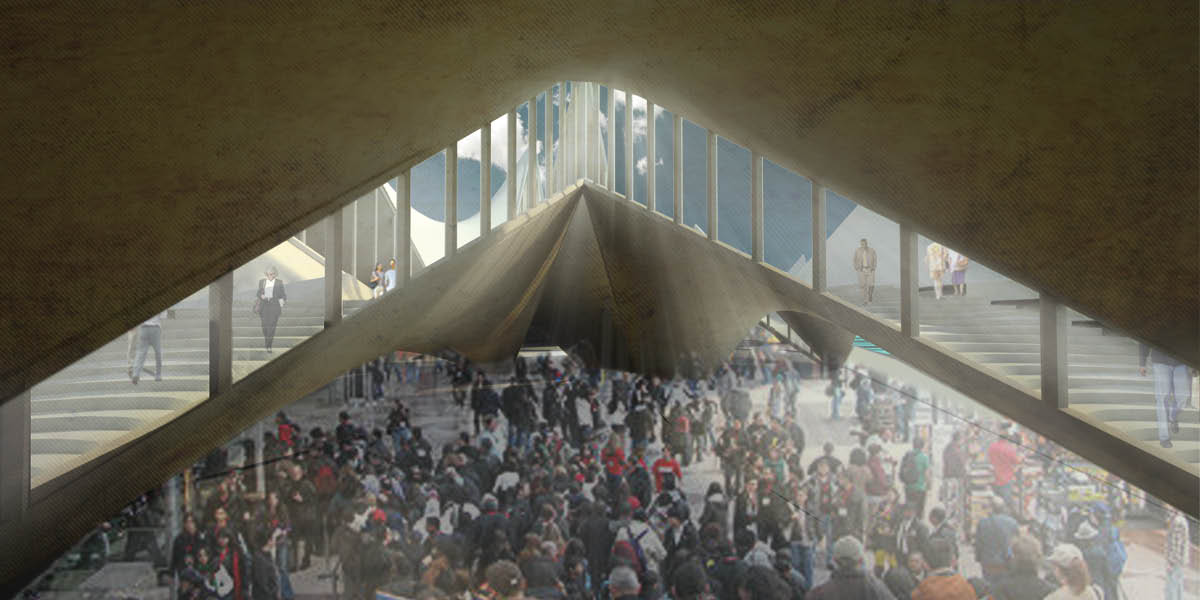
Hypars form a canopy below and terraced landscapes above
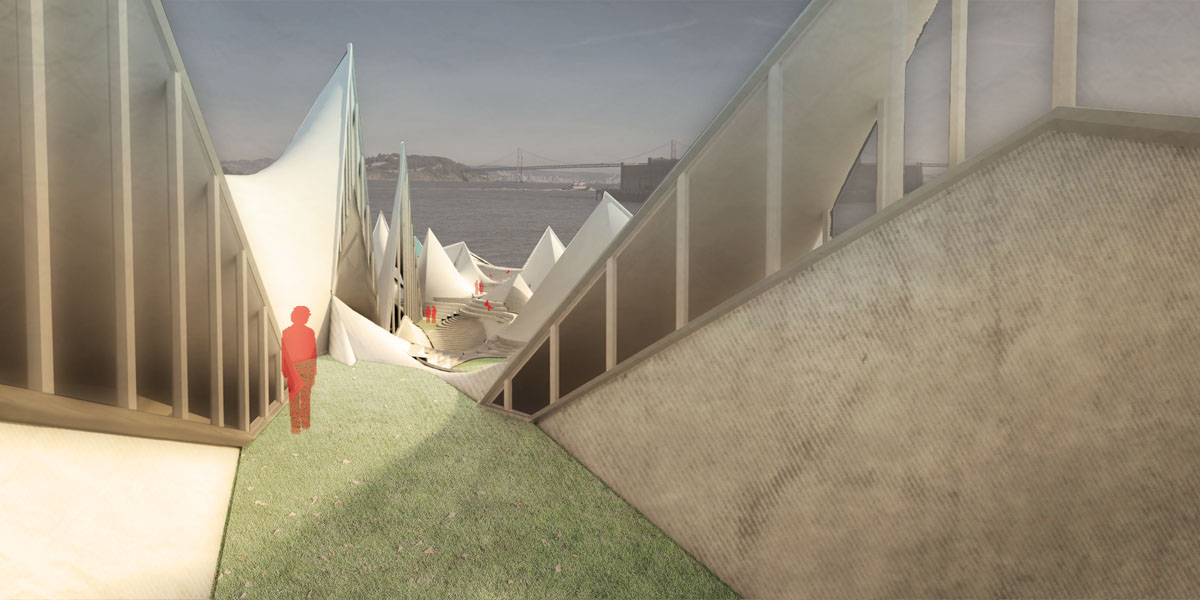
Inscribed Waterlevels: The structure’s silhouette and spatial experience reference the hills, waves, and spans of the bay